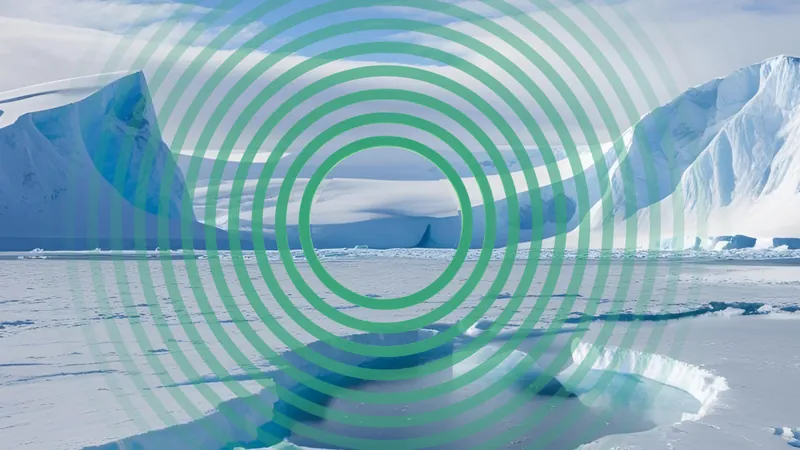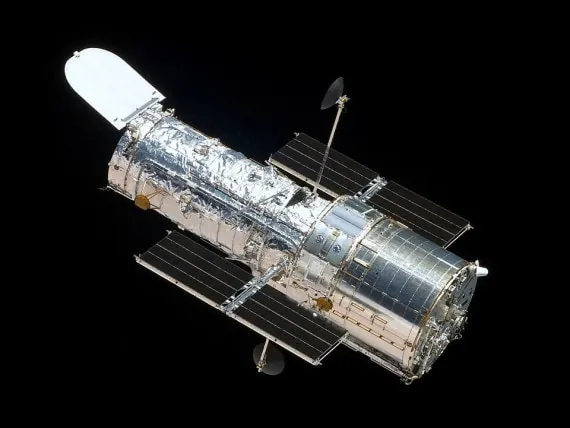
Mysterious Radio Pulses Detected Over Antarctica Could Signal New Particles!
2025-06-17
Author: Charlotte
Unveiling the Cosmic Mystery
In a groundbreaking discovery, scientists have detected an extraordinary burst of radio signals emanating from beneath the icy expanse of Antarctica—signals that may hint at the existence of entirely new particles or unknown interactions in the universe.
ANITA: The Cosmic Detector
These enigmatic radio pulses were captured by the Antarctic Impulsive Transient Antenna (ANITA), a sophisticated array of instruments suspended high above the ice by balloons. ANITA’s mission? To uncover ultra-high-energy (UHE) cosmic neutrinos and other cosmic rays plummeting towards Earth from the far reaches of space.
A Signal Like No Other
Typically, ANITA detects signals reflected off Antarctica's ice surface. However, this time, the radio waves originated from below the horizon, coming in at a perplexing 30-degree angle—one that current particle physics can't explain.
"This is a fascinating puzzle because we still can't identify the source of these anomalies," stated Stephanie Wissel from Penn State University, a member of the ANITA team. "What we can conclude is that they most likely aren't from neutrinos."
Decoding the Cosmic Ghosts
Neutrinos, often dubbed 'ghost particles' for their elusive nature, tend to pass through matter with minimal interaction. Despite their abundance, this same trait makes them extraordinarily difficult to detect. Wissel emphasizes, "While a billion neutrinos zip through your thumbnail at any moment, catching one is like trying to capture a shadow!"
Should these anomalous signals indeed originate from neutrinos, that would suggest they've soared through vast cosmic distances without entangling with other particles—potentially arriving from the outer fringes of the observable universe.
The Hunt for Ice Showers
ANITA's design focuses on spotting interactions that create 'ice showers' under specific conditions. These phenomena are triggered by tau neutrinos impacting the ice and giving birth to a tau lepton, which rapidly decays into smaller particles, generating detectable radio frequencies.
Yet, this time, the angle of the detected signals exceeds what current particle models predict, leaving researchers stumped and unable to trace back to the initial particle. Even other prominent detectors like IceCube and the Pierre Auger Observatory failed to catch any evidence explaining these puzzling signals.
Could It Be Dark Matter?
With no concrete explanation in sight, the ANITA team has classified these signals as "anomalous," suggesting they could indicate something entirely new—potentially even a glimpse into dark matter, which makes up about 85% of the universe’s mass yet eludes detection.
Looking Ahead: PUEO's Role
For answers, researchers are eagerly awaiting the deployment of a more advanced detector—the Payload for Ultrahigh Energy Observations (PUEO)—currently in development at Penn State. Wissel contemplates, "It’s one of those unsolved mysteries, and I’m thrilled that when we launch PUEO, we’ll enhance our detection capabilities significantly!"
As the search continues, the scientific community is buzzing with anticipation about what lies beyond our current understanding of the universe. Could these mysterious signals rewrite the rules of particle physics? The excitement is palpable!









 Brasil (PT)
Brasil (PT)
 Canada (EN)
Canada (EN)
 Chile (ES)
Chile (ES)
 Česko (CS)
Česko (CS)
 대한민국 (KO)
대한민국 (KO)
 España (ES)
España (ES)
 France (FR)
France (FR)
 Hong Kong (EN)
Hong Kong (EN)
 Italia (IT)
Italia (IT)
 日本 (JA)
日本 (JA)
 Magyarország (HU)
Magyarország (HU)
 Norge (NO)
Norge (NO)
 Polska (PL)
Polska (PL)
 Schweiz (DE)
Schweiz (DE)
 Singapore (EN)
Singapore (EN)
 Sverige (SV)
Sverige (SV)
 Suomi (FI)
Suomi (FI)
 Türkiye (TR)
Türkiye (TR)
 الإمارات العربية المتحدة (AR)
الإمارات العربية المتحدة (AR)